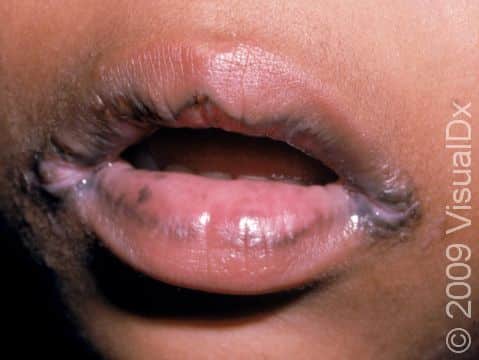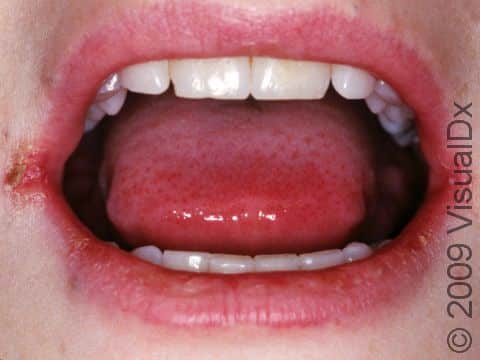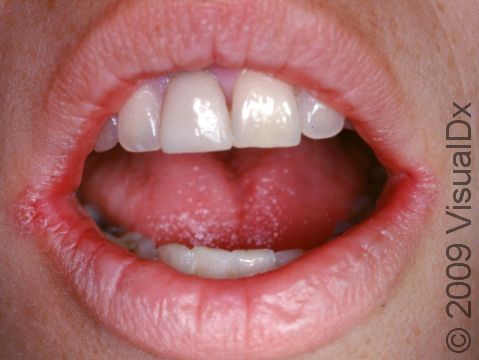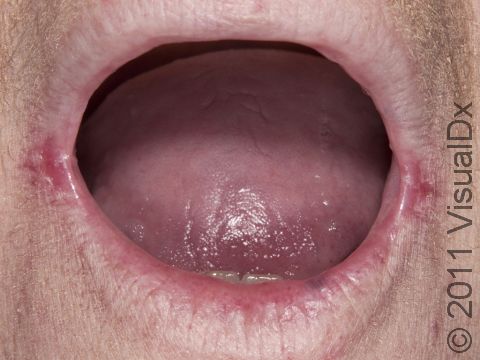Angular Cheilitis
Angular cheilitis (perlèche) is a chronic inflammatory condition of the corners of the mouth. Usually associated with a fungal (Candidal) or bacterial (Staphylococcal) infection, those affected may also have thrush (oral candidiasis). The areas are generally slightly painful. The condition can last from days to months, depending upon whether or not the affected person seeks treatment.
Who's At Risk?
Angular cheilitis may affect people of all ages. Chronic pooling of saliva encourages fungal and bacterial growth, and patients who are immunocompromised, have undergone head and neck radiation, or have diabetes mellitus are also prone to this condition.
Patients who are predisposed to this condition also may have problems with:
- Iron deficiency
- Vitamin B12 deficiency
- Folate deficiency
- Drooping of the corners of the mouth caused by dentures that do not adequately support the facial musculature
Signs & Symptoms
Angular cheilitis can be found in the corners of the mouth. A patient with angular cheilitis may notice:
- Cracking and fissuring of the corners of the mouth, with redness
- Ulceration
- Drainage of pus
- Tissue softness and tenderness
Self-Care Guidelines
Dentures may act as reservoirs of infection. To prevent angular cheilitis, try soaking dentures overnight in a solution made up of 10 parts water to 1 part household bleach. For metal dentures that may become discolored by bleach, the use of a sodium benzoate or chlorhexidine mouth rinse is a good option.
Treatments
Treatment of angular cheilitis is usually undertaken with topical antifungals such as nystatin, clotrimazole, or econazole. Combinations of a topical antifungal and a topical steroid – such as Mycostatin® and triamcinolone or iodoquinol and hydrocortisone – may also be prescribed. In persistent cases, oral antifungals may be used to treat the condition.
Visit Urgency
If persistent lip irritation, painful cracking, or fissuring at the corners of the mouth is present, seek evaluation from your primary care provider or dermatologist.
Trusted Links
References
Freedberg, Irwin M., ed. Fitzpatrick’s Dermatology in General Medicine. 6th ed, pp.1081, 1082, 1394, 1413, 2008, 2145. New York: McGraw-Hill, 2003.
Last modified on October 10th, 2022 at 7:15 pm

Not sure what to look for?
Try our new Rash and Skin Condition Finder



